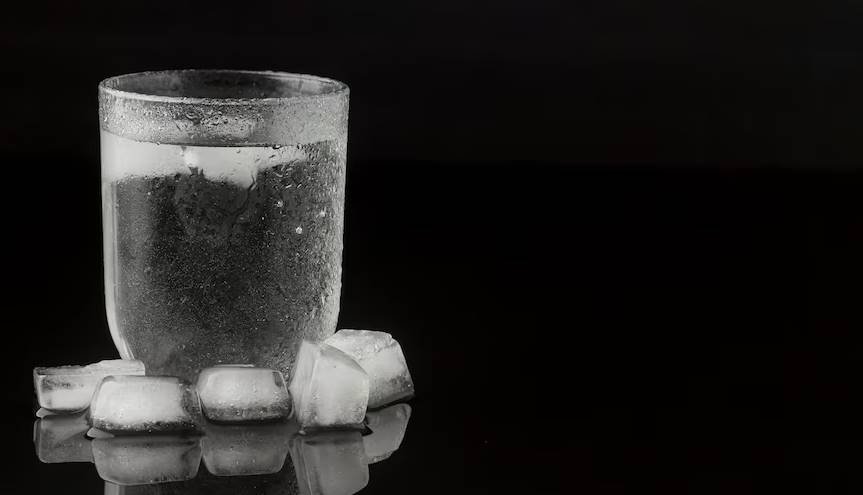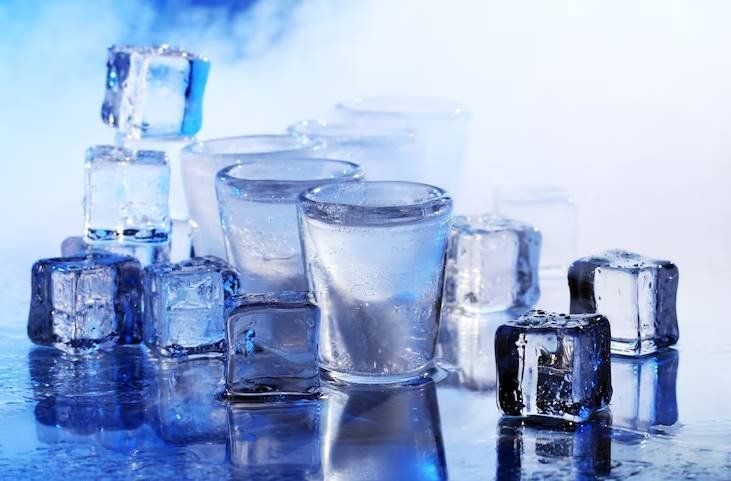As an experienced health and wellness advisor, I’ve come across a myriad of diet plans and weight loss strategies. Some are well-founded in science, while others lean more towards gimmick territory. Today, we’re going to explore one that has been generating significant buzz – the Ice Diet. This unique approach involves consuming ice to aid in weight loss, but how effective is it really? Let’s delve into the details and determine its potential benefits and drawbacks.
So, you may be wondering, “How does eating ice help with weight loss?” The basic principle behind the Ice Diet is that your body burns calories as it works to warm up the ice you consume. The consumption of one liter of ice can potentially burn around 160 extra calories. However, it’s important to note that this isn’t a magic solution for weight loss. While it can contribute to your calorie-burning efforts, it should be combined with a balanced diet and regular exercise for optimal results. By following this guide, you’ll gain a deeper understanding of the Ice Diet and how to implement it effectively. So let’s dive in and chill out with the facts!
What is the Ice Diet?
The Ice Diet is a unique weight loss strategy that revolves around the consumption of ice. It was invented by Dr. Brian Weiner and has since gained popularity for its simplicity and novelty. The idea behind this diet is that by eating ice, you force your body to expend energy (burn calories) to heat the ice to body temperature. Essentially, it’s a way to boost your metabolism and increase calorie burn without adding any actual food or caloric intake.

As you continue to explore the Ice Diet, it’s essential to understand that this isn’t a standalone diet plan but rather a supplement to an overall healthy lifestyle. It’s not about replacing meals with ice. Instead, it’s about adding ice consumption to a balanced diet and regular exercise. The goal here is to enhance your weight loss efforts and potentially speed up the process.
According to Dr. Weiner, consuming one liter of ice can help burn approximately 160 extra calories. This figure is based on the fact that the human body uses about 1 calorie to heat 1 milliliter of ice-cold water to body temperature. While this may not seem like much, over time, these calories can add up and contribute to weight loss. However, it’s important to note that individual results may vary, and the Ice Diet may not be effective for everyone.
The Science Behind Consuming Ice for Weight Loss
The underlying principle of the Ice Diet is thermogenesis – the process by which the body generates heat. When you consume ice, your body has to work harder to maintain its core temperature. This process requires energy, which means burning calories. The concept is similar to the idea of drinking cold water to boost metabolism and calorie burn, but taken to an extreme.
In thermodynamics, the energy required to raise the temperature of water from zero degrees Celsius (the freezing point) to body temperature (approximately 37 degrees Celsius) is known as the specific heat capacity of water. This energy expenditure is what allows the Ice Diet to aid in weight loss. To put it simply, your body burns calories as it warms the ice-cold water to body temperature.
Studies have shown that cold exposure can increase calorie burn. For instance, a study published in the Journal of Clinical Investigation found that people who spent two hours a day in a 66-degree room burned more energy than those who spent their time in warmer environments. This suggests that the act of warming up, whether it’s from consuming ice or being in a cooler environment, could potentially aid in weight loss. However, it’s crucial to remember that these findings are preliminary and more research is needed to fully understand the effects of cold exposure on weight loss.
How to Incorporate Ice into Your Diet for Weight Loss
Incorporating ice into your diet for weight loss is a relatively straightforward process. The idea is to consume ice in a way that allows your body to burn calories without adding any caloric intake. It’s important to note that this method should complement a balanced diet and regular exercise, not replace them.

Here are some steps to help you incorporate ice into your diet:
Start Small: Begin by adding a few ice cubes to your drinks throughout the day. This will allow your body to get used to the cold temperature.
Increase Gradually: Once you’re comfortable with a few ice cubes, gradually increase the amount. Remember, the goal is not to cause discomfort, but to stimulate calorie burning.
Eat Ice Directly: If you can tolerate it, consider eating ice directly. This can be done by freezing water in an ice cube tray and consuming the cubes like a snack.
Try Ice Baths or Cold Showers: While not directly related to eating ice, these methods can also stimulate calorie burning through cold exposure. However, always ensure your safety and comfort first.
Stay Hydrated: Consuming ice can quench your thirst, but it’s important to stay hydrated by drinking sufficient amounts of water as well.
Remember, the Ice Diet is not a quick fix for weight loss. It’s a method to supplement your existing weight loss strategy. As always, consult with a healthcare professional before making significant changes to your diet or lifestyle.
Potential Benefits of the Ice Diet
The Ice Diet can be an intriguing addition to a weight loss plan due to its unique approach. The primary benefit of this diet is the potential for increased calorie burning. By consuming ice, your body needs to expend energy to raise the temperature of the ice to body temperature, effectively burning calories in the process.
Moreover, the Ice Diet could have some additional benefits. For instance, it might help you stay hydrated, especially during hot weather when you’re more likely to sweat and lose fluids. Consuming ice can also serve as a zero-calorie snack, which could potentially help curb cravings and prevent overeating.
A study conducted by the National Institutes of Health found that individuals who were exposed to cold temperatures for a prolonged period had an increase in their metabolism and burned more calories compared to those in warmer environments. This suggests that the Ice Diet, which is based on the principle of cold exposure, could potentially aid in weight loss. However, it’s important to note that more research is needed to fully understand the benefits and potential drawbacks of the Ice Diet. It’s always recommended to consult with a healthcare professional before making significant changes to your diet or lifestyle.
Possible Drawbacks and Considerations of the Ice Diet
While the Ice Diet might seem like an easy and straightforward method to boost calorie burning, it’s important to consider potential drawbacks and risks. One of the main considerations is that this diet could potentially lead to overconsumption of cold water or ice, which may cause discomfort or even health issues such as hypothermia if not monitored properly.
Furthermore, relying solely on the Ice Diet for weight loss is not a balanced approach. It’s crucial to remember that a healthy diet and regular exercise are the cornerstones of sustainable weight loss. The Ice Diet should be viewed as a supplementary method rather than a primary strategy.
Additionally, there’s a lack of comprehensive scientific research supporting the efficacy of the Ice Diet. While some studies suggest that cold exposure might increase calorie burning, the results are not definitive. The long-term effects and potential risks of consuming large amounts of ice are also not fully understood, which underscores the importance of moderation and consultation with a healthcare professional before embarking on this diet.
Practical Tips for Trying the Ice Diet
If you’re considering giving the Ice Diet a try, it’s essential to approach it in a safe and sensible manner. The diet involves consuming ice or cold water as a means to burn calories, but it’s crucial to remember that this should supplement a balanced diet and regular exercise routine, not replace them. Let’s explore some practical tips for incorporating the Ice Diet into your lifestyle.
Here are some steps to get you started:
- Consult a Healthcare Professional: Before starting any new diet or weight loss strategy, always consult with a healthcare professional. They can provide personalized advice based on your health status and weight loss goals.
- Start Small: Don’t rush into eating large amounts of ice. Start with a few ice cubes in your drinks and gradually increase as your body adjusts.
- Listen to Your Body: If consuming ice causes discomfort or makes you feel unwell, stop immediately. The goal is to enhance your weight loss efforts, not to make yourself uncomfortable.
- Balance is Key: Remember, the Ice Diet is not a standalone solution. Maintain a balanced diet and regular exercise routine for optimal results.
- Stay Hydrated: While consuming ice can help quench thirst, it’s important to also drink plenty of water to stay properly hydrated.
Remember, the Ice Diet is a supplementary method to boost calorie burning. It’s not a magic solution, and results will vary from person to person. Always prioritize your health and wellbeing, and don’t hesitate to seek professional advice if you have any concerns or questions.
Answering the Big Question: How Many Ice Cubes Should I Eat to Lose Weight?
The number of ice cubes you should consume to aid weight loss can vary greatly depending on individual factors. However, it’s crucial to remember that the Ice Diet is a supplement to a balanced diet and regular exercise, not a standalone weight loss solution. Consuming large amounts of ice isn’t recommended and can lead to discomfort or even health issues.
- Start Small: Begin by adding a few ice cubes to your drinks throughout the day. This will allow your body to get used to the cold temperature.
- Increase Gradually: Once you’re comfortable with a few ice cubes, gradually increase the amount as your body adjusts. It’s important not to force yourself or consume so much ice that it causes discomfort.
- Listen to Your Body: Everyone’s body is different. Some may be able to tolerate more ice than others. Listen to your body and adjust your ice consumption accordingly. If you feel unwell, stop immediately.
In terms of a specific number, Dr. Brian Weiner suggests that consuming one liter of ice (roughly equivalent to melting 100 ice cubes) could help burn approximately 160 extra calories. However, this figure is just an estimate and actual results may vary. It’s always best to consult with a healthcare professional before making significant changes to your diet or lifestyle.
To Wrap Up
The Ice Diet, which involves consuming ice or cold water to stimulate calorie burning, might seem like an intriguing method for weight loss. However, it’s important to remember that it’s not a magic bullet, but rather a supplementary tool that could potentially assist in your weight loss journey when combined with a balanced diet and regular exercise.
The key takeaway here is that while the concept of the Ice Diet is grounded in the principles of thermogenesis and specific heat capacity, it’s not a standalone solution for weight loss. So, keep smiling, stay positive, and remember that sustainable weight loss is a journey that involves balance, consistency, and making choices that nurture both your body and mind.





















